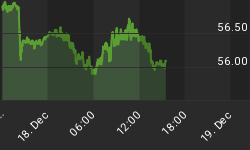Recent history shows that investors made very easy money in the 1995-2000 period betting on the broad market - the S&P 500 returned 240% in just five years. By the end of the run, a vast majority of investors and analysts were in a state of euphoria. At the same time, a book called "Dow 36,000" went into print.
The primary reason for this euphoria was psychological. Less than 20% of the time during the 5 years was spent in a correction/consolidation mode and for over 80% of the time, investors were counting their paper gains.

The more recent cyclical bull in US stocks produced a gain of 100% in five years from a bottom set in 2002 to a top October 2007. Periods of consolidations and corrections were again shorter than periods of rallies.
The Gold Stock Bull, which most investors track through the performance of the $XAU and $HUI, presents a completely different picture. This bull market, which began at the end of 2000, is much more impressive in its magnitude than the S&P 500 rally of the late 90s. The $XAU gained 350%, while $HUI skyrocketed by 1,160%.
But there are no signs of euphoria, actually mostly signs of frustration, especially among investors who got in during the past couple of years. This is easy enough to understand simply by looking at the chart of $XAU.

Around 75% of the time is spent in consolidation / correction mode and only 25% of the time we enjoy nice gains. Consolidation periods typically last anywhere between one to two years, where brutal 30% corrections are common. In short, volatility is huge both to the upside and the downside and few investors have the stomach to handle it. Common investment tactics such as placing stops on individual stocks fail miserably.
Precious metal related stocks require exceptional patience. If you are convinced in a long lasting secular bull market in commodities and precious metals, then the best way to profit is to:
- Hold a long term core position in your favorite precious metal stocks and decrease your trading activity
- Reduce positions in a stock which gained 100% by one half, so that the remaining shares are free. Re-allocate the proceeds to other stocks in the portfolio
Share prices for small cap mining and exploration companies are near their lowest level relative to gold (real money) since the beginning of the gold bull market. Never has a bull market ended in a period of frustration. This means that there are currently a number of extraordinary opportunities in the junior arena.















